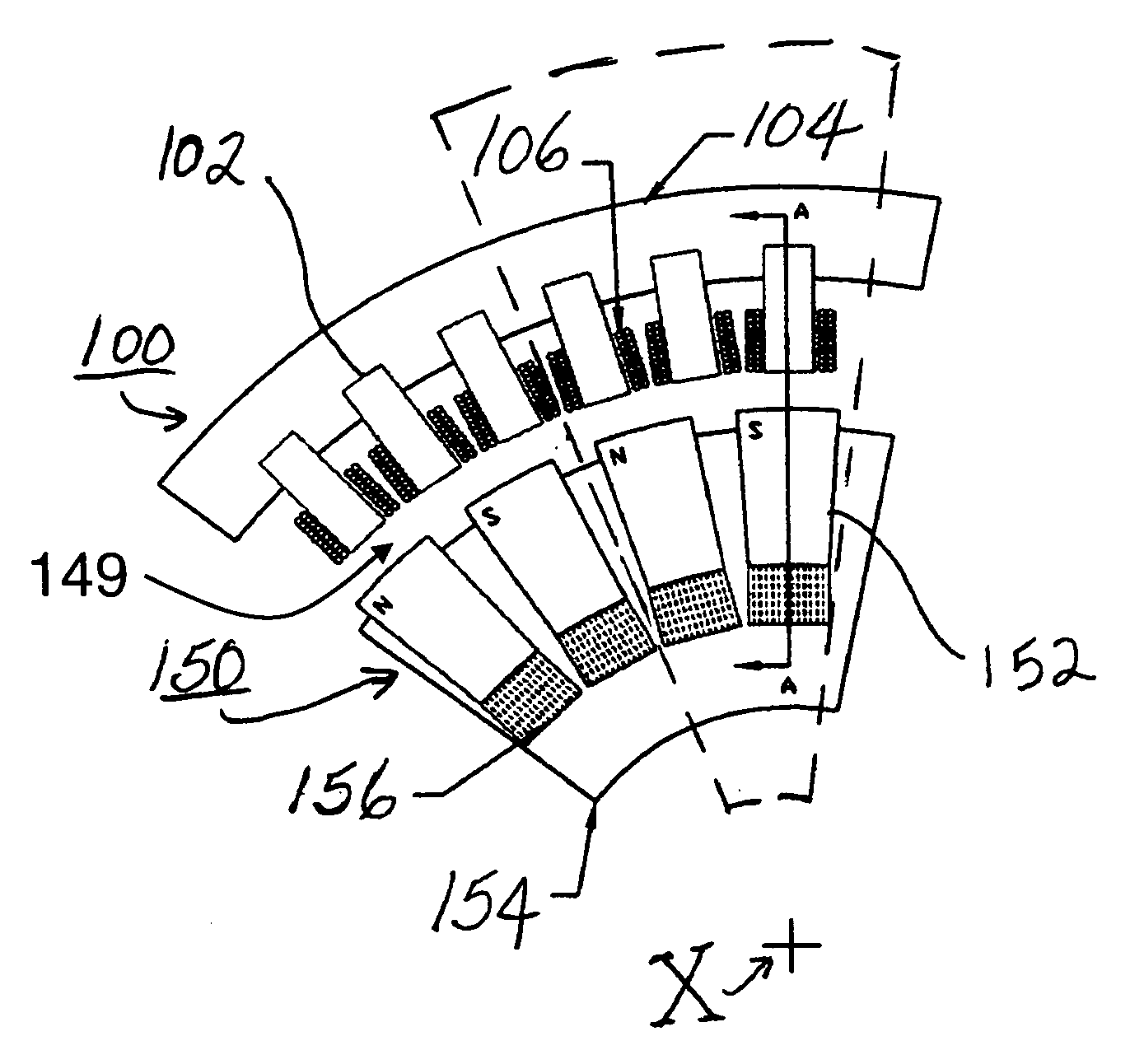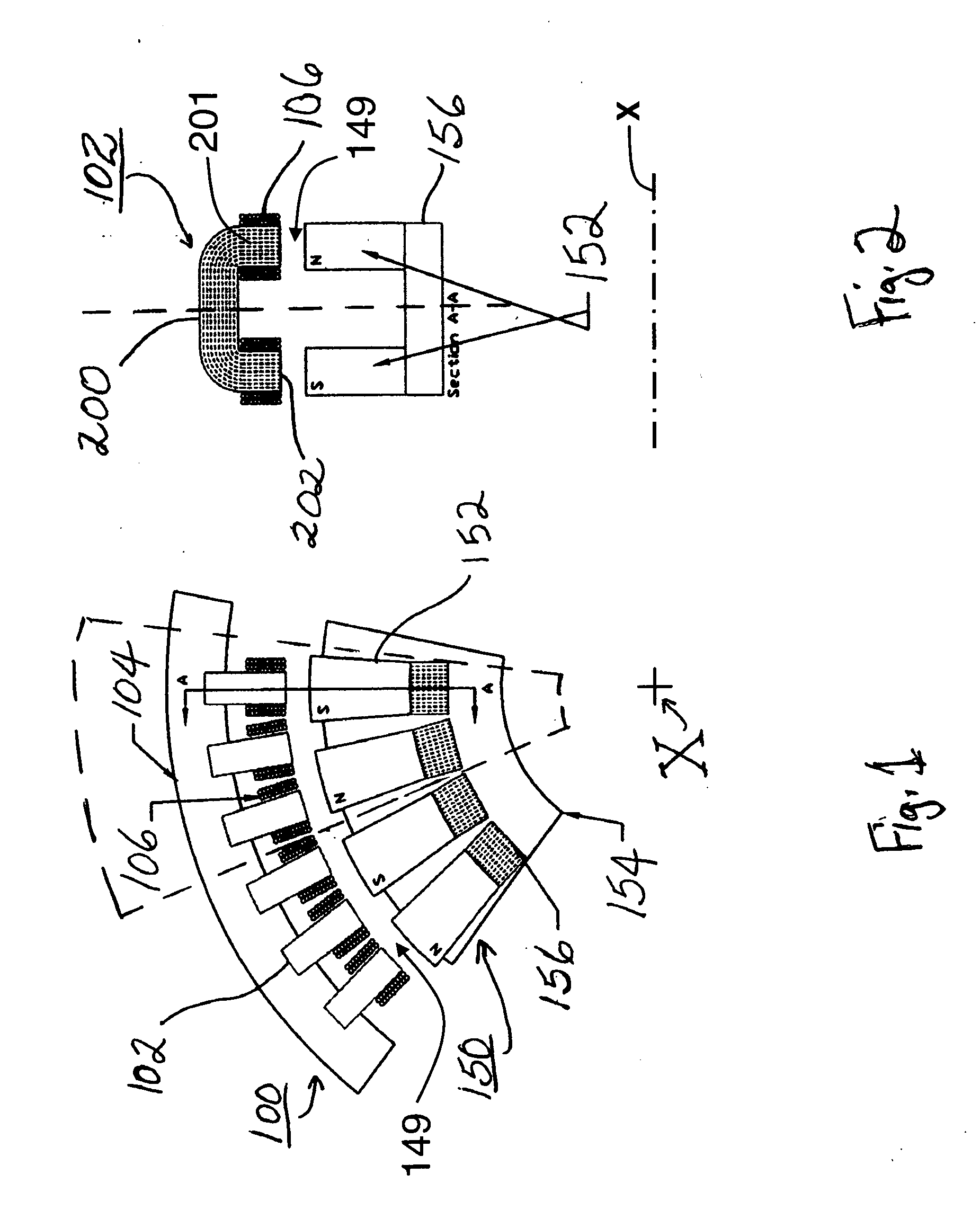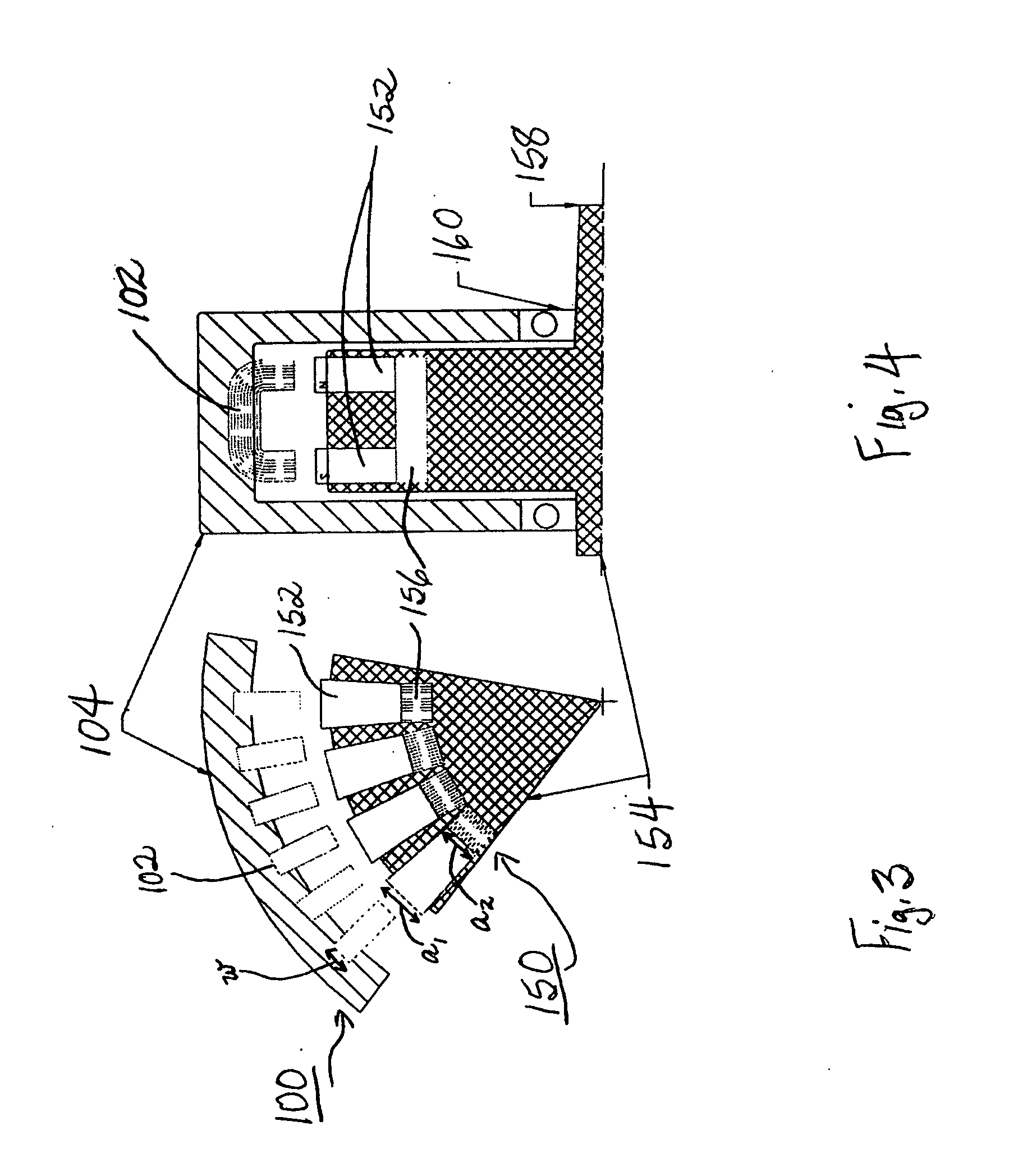Radial airgap, transverse flux machine
- Summary
- Abstract
- Description
- Claims
- Application Information
AI Technical Summary
Benefits of technology
Problems solved by technology
Method used
Image
Examples
example 1
DESIGN EXAMPLE 1
[0129]The beneficial use of low core loss stator magnetic materials in combination with a low SPP configuration is apparent from the following analysis, in which machines made with conventional motor steel (M19, a 26-gage, 3% silicon iron, non-oriented alloy) are compared with machines employing an advanced, low core loss, Fe-based amorphous magnetic material, METGLAS® 2605SA1. Machines employing these materials typically are designed to operate at peak working flux levels Bmax of 1.6 and 1.2 T, respectively. Although both materials have higher absolute saturation flux density, machine design invariably contemplates some allowance so that locally higher flux levels to not reach absolute saturation and to account for the loss of saturation flux density attendant to temperature increases.
[0130]The principal loss mechanisms in machines are ohmic (Joule) heating in the phase windings and core loss in the soft magnetic components. The values of these terms depend strongly...
example 2
DESIGN EXAMPLE 2
[0143]A more extensive consideration of the effect of soft magnetic material and SPP selection is carried out using the machine configurations delineated in Table II below. In particular, for each configuration six parameters are chosen to be either the minimum or maximum value listed, thus producing the 26=64 configurations of machines representing all the possible permutations of the listed design parameters.
TABLE IIDynamoelectric Machine Configuration ParametersParameterunitsminmaxRsradius of airgapmm50500tlength of core in axial directionmm50500qlength of core in radial directionmm10100Rrotational speedrpm100010000Stooth count (=slot count)6120κratio of tooth area to airgap area0.100.90(κ = w × t / z)
[0144]For each configuration and for a series of possible SPP values ranging from 0.5 to 4, the theoretical efficiency is calculated using the approximate analysis represented in equations (8a) and (8b) set forth above, using either AM or M19 as the stator core materia...
example 3
DESIGN EXAMPLE 3
[0145]The analysis of Example 2 is further refined to account for certain departures from ideal behavior that affect actual designs. In particular, the following effects are included:[0146]1) The extra space in each slot needed for wire insulation. This is in effect a penalty to high slot count designs, since this amount is fixed and not a percentage of slot space, and is measured in the thickness of the insulation system.[0147]2) The effect of parasitic high frequency losses in the windings. Frequency is function of the selected SPP, and a penalty to the winding resistance can be applied as a square of the frequency, The term used is
1+Coeff·(f1000)2(9)[0148]3) Include a term similar to that above, but applied to the core losses.[0149]4) Correction for the actual mass densities of M19 and AM (7.8 and 7.2 g / cm3, respectively).[0150]5) Correction for the imperfect focusing of flux from the rotor magnets across a wide airgap into many small teeth at SPP [0151]6) Recogni...
PUM
 Login to View More
Login to View More Abstract
Description
Claims
Application Information
 Login to View More
Login to View More - R&D
- Intellectual Property
- Life Sciences
- Materials
- Tech Scout
- Unparalleled Data Quality
- Higher Quality Content
- 60% Fewer Hallucinations
Browse by: Latest US Patents, China's latest patents, Technical Efficacy Thesaurus, Application Domain, Technology Topic, Popular Technical Reports.
© 2025 PatSnap. All rights reserved.Legal|Privacy policy|Modern Slavery Act Transparency Statement|Sitemap|About US| Contact US: help@patsnap.com



